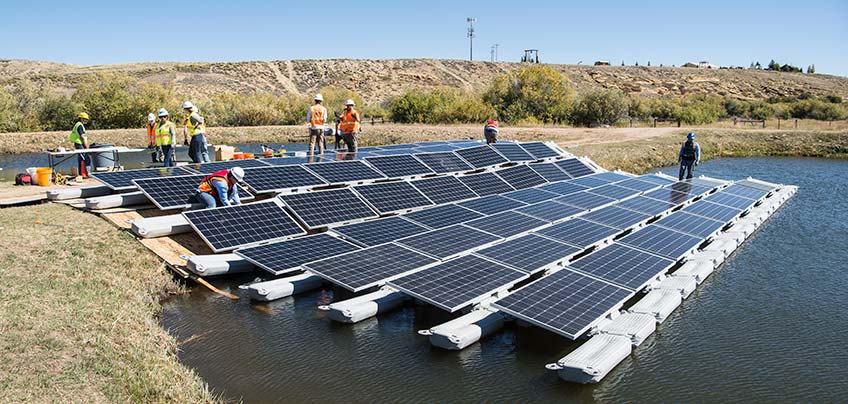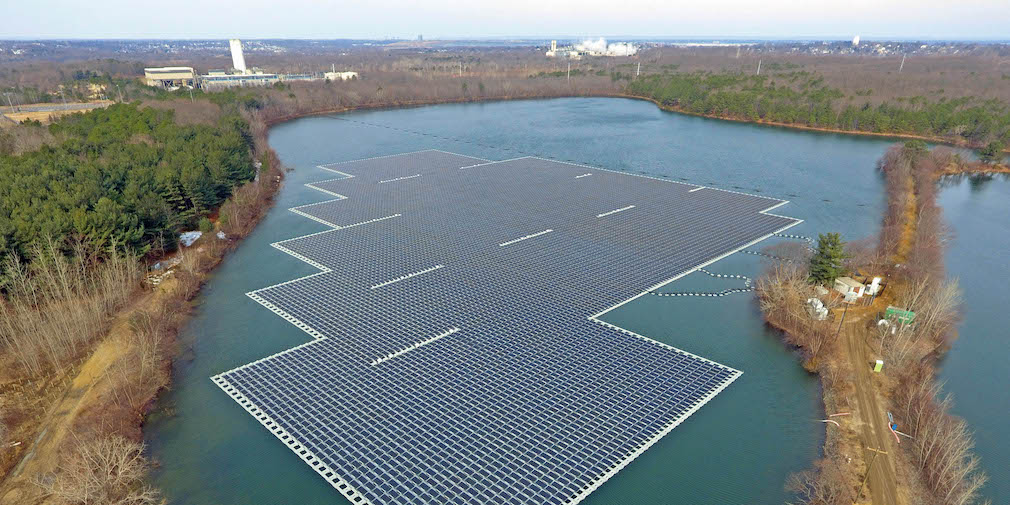|
2020-03-26 09:31:45 Floating Solar Plants
Global floating solar demand is expected to grow by an average of 22 percent year-over-year from 2019 through 2024. Main reasons for this development: Water saving and water quality: the partial coverage of basins can reduce the water evaporation. This result depends on climate conditions and on the percentage of the covered surface. In arid climates such as Australia this is an important advantage since about 80% of the evaporation of the covered surface is saved and this means more than 20,000 m3/year/ha. This is a very useful feature if the basin is used for irrigation purposes. Cooling: the floating structure allows the implementation of a simple cooling system. Cooling mechanism is natural but can also be active by generating a water layer on the PV modules or using a submerged PV modules, the so-called SP2 (Submerged Photovoltaic Solar Panel).[8] In these cases the global PV modules efficiency rises thanks to the absence of thermal drift, with a gain in energy harvesting up to 8-10%. Tracking: a large floating platform can be easily turned and can perform a vertical axis tracking: this can be done without wasting energy and without the need for a complex mechanical apparatus as in land-based PV plants. A floating PV plant equipped with a tracking system has a limited additional cost while the energy gain can range from 15 to 25%. |
 The most powerful floating solar PV plant in Europe was inaugurated in southern France on Friday (18 October), marking another milestone in the development of solar energy.
The most powerful floating solar PV plant in Europe was inaugurated in southern France on Friday (18 October), marking another milestone in the development of solar energy.